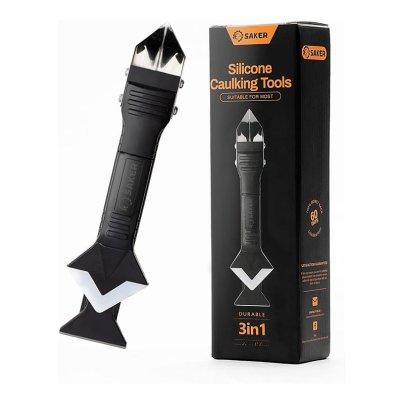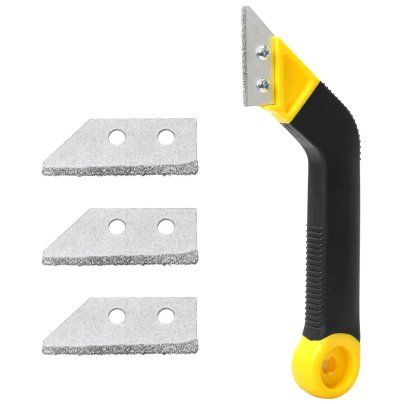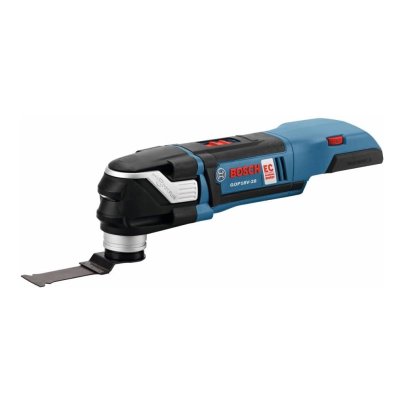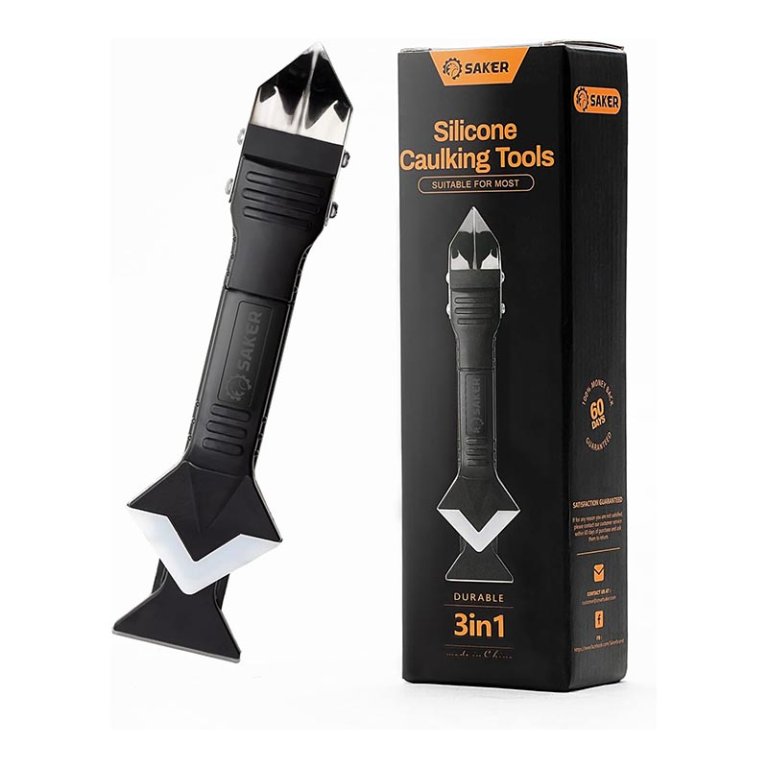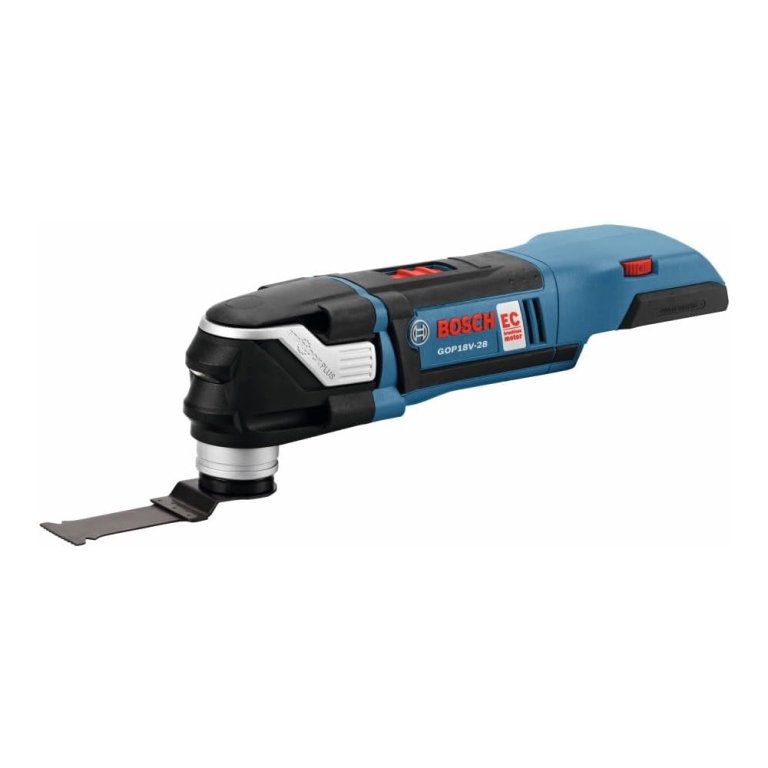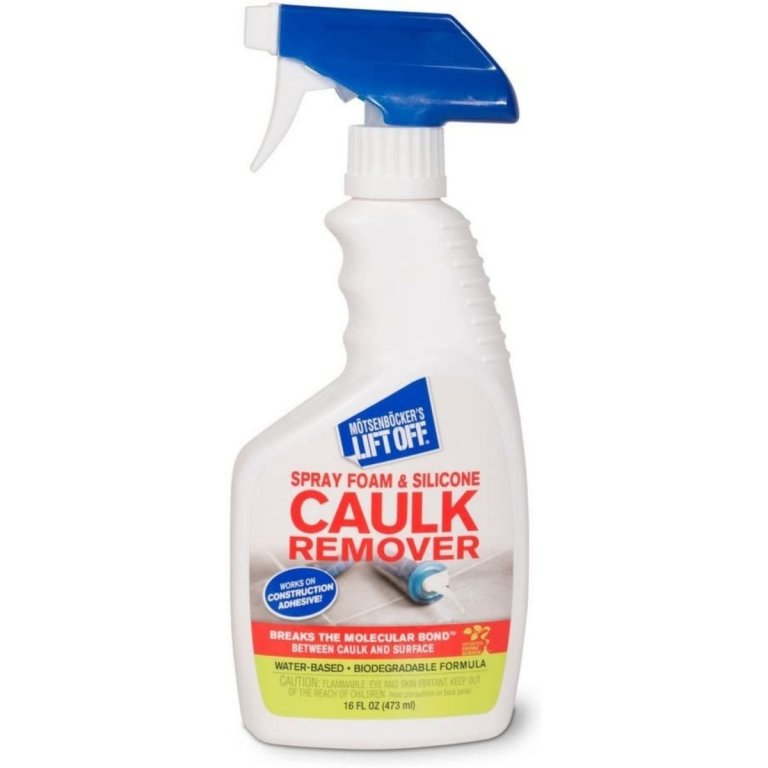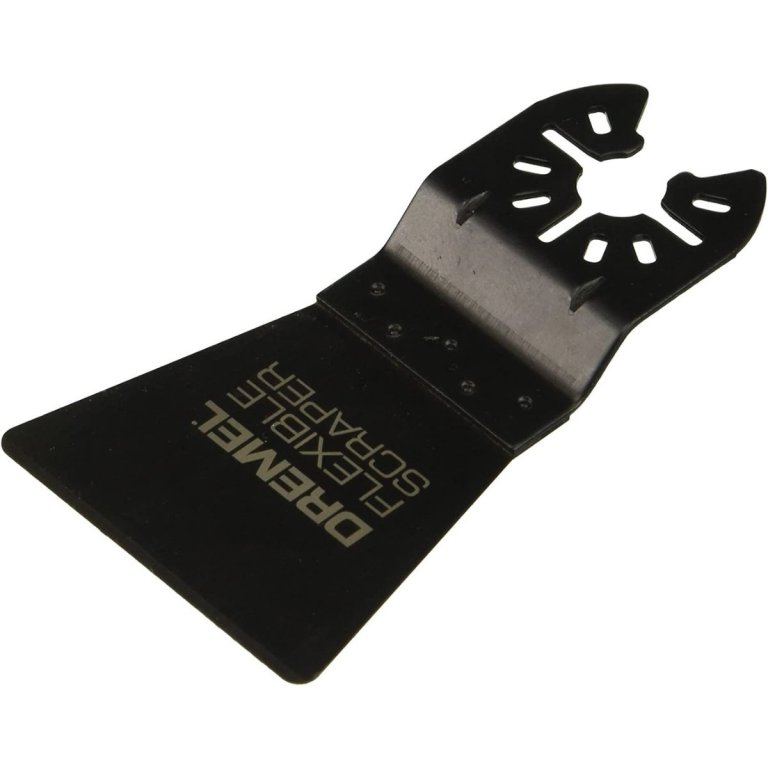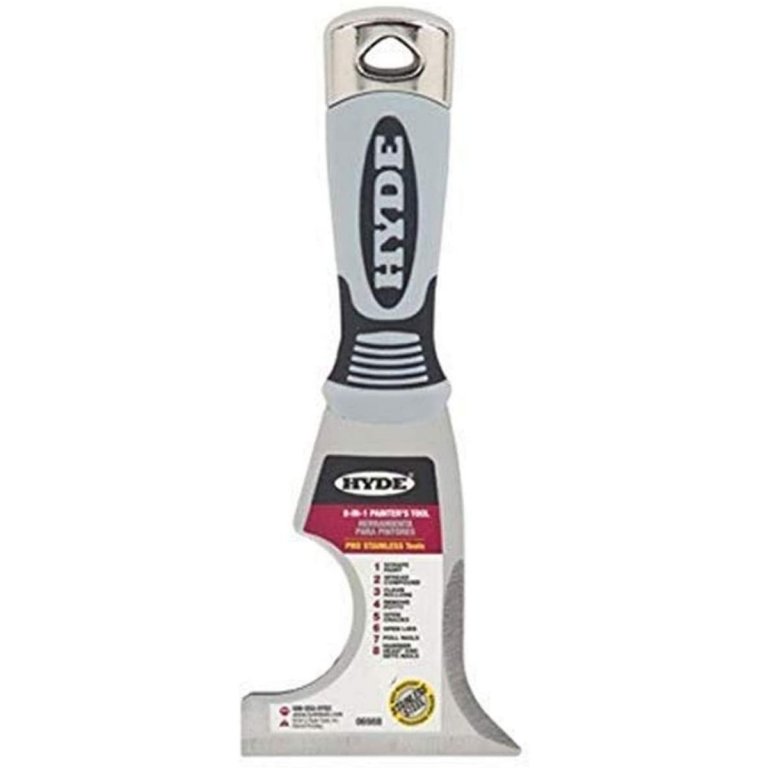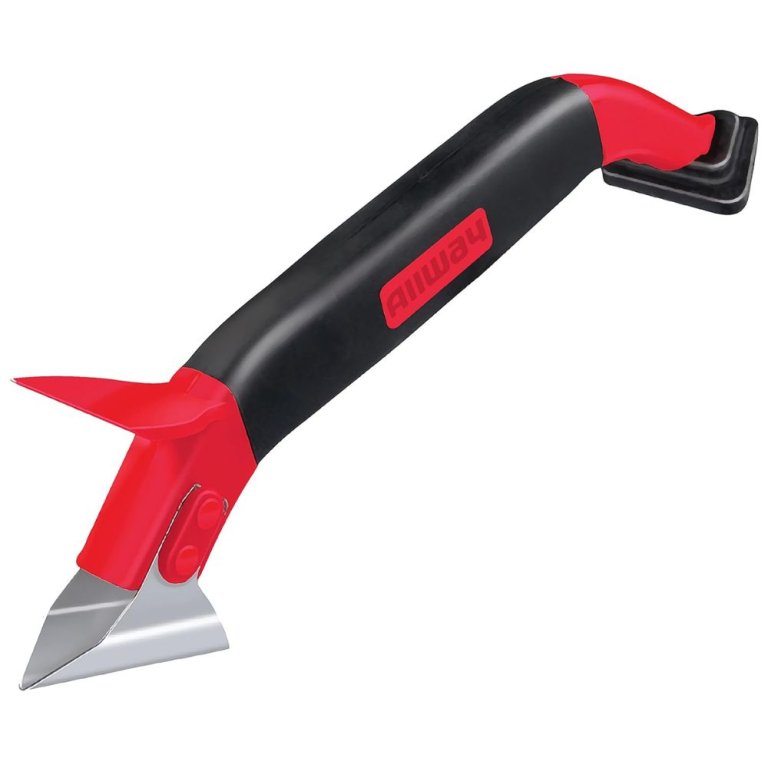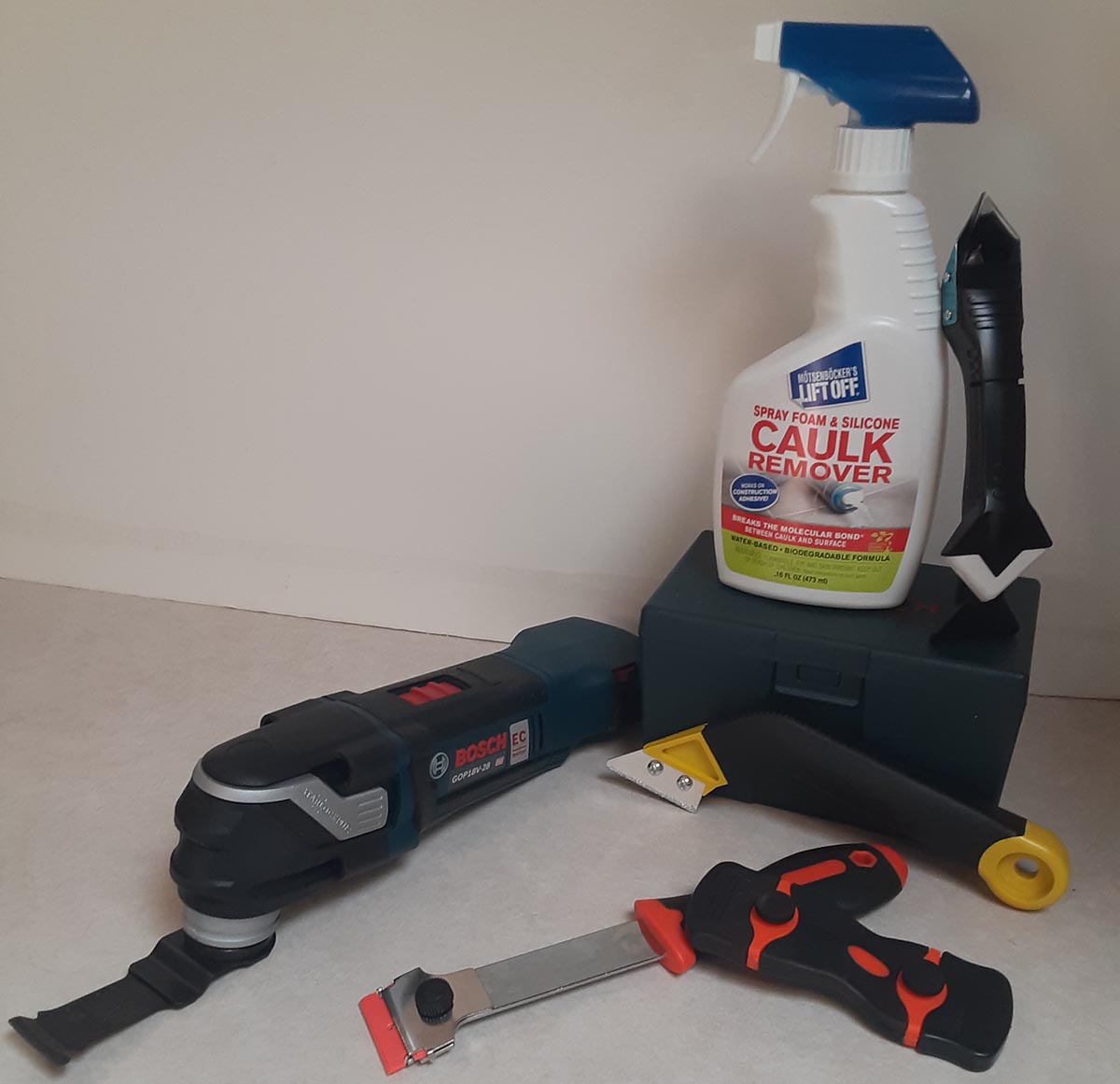
We may earn revenue from the products available on this page and participate in affiliate programs. Learn More ›
If old caulk has your rooms looking drab, it’s time to invest in a caulk removal tool to deal with that dingy, cracked sealant and freshen up your home. Not only can bad or old caulk deter from the clean appearance of a sink, tub, or other bathroom fixture, but it also can allow bugs or leaks to sneak in around windows and doors. Don’t let this small detail cause big problems.
Since it can be frustrating to remove, we researched and tested five tools on a variety of caulks to determine the best caulk removal tools for your job. We like the Saker Silicone Caulking Tool best for its three-in-one design, heavy-duty construction, and lightweight handle. All of the products on this list were thoroughly tested or vetted for effectiveness and reliability.
Instead of delaying, speed through the caulk removal process and jump right into applying new sealant. The best caulk removal tools are designed explicitly for these tasks.
- BEST OVERALL: Saker Silicone Caulking Tool
↓ Jump to Review - BEST BANG FOR THE BUCK: Coitak Angled Grout Saw
↓ Jump to Review - BEST OSCILLATING TOOL: Bosch StarlockPlus Oscillating Multi-Tool
↓ Jump to Review - BEST SCRAPER: Dekeones Razor Blade Scraper
↓ Jump to Review - BEST LIQUID: Motsenbocker’s Lift Off Spray Caulk Remover
↓ Jump to Review - BEST TOOL BLADE: Dremel Universal Oscillating Blade
↓ Jump to Review - BEST KNIFE: Hyde 06988 Pro Stainless 8-in-1 Multi-Tool
↓ Jump to Review - BEST GRIP: Allway 3-in-1 Caulk Tool
↓ Jump to Review
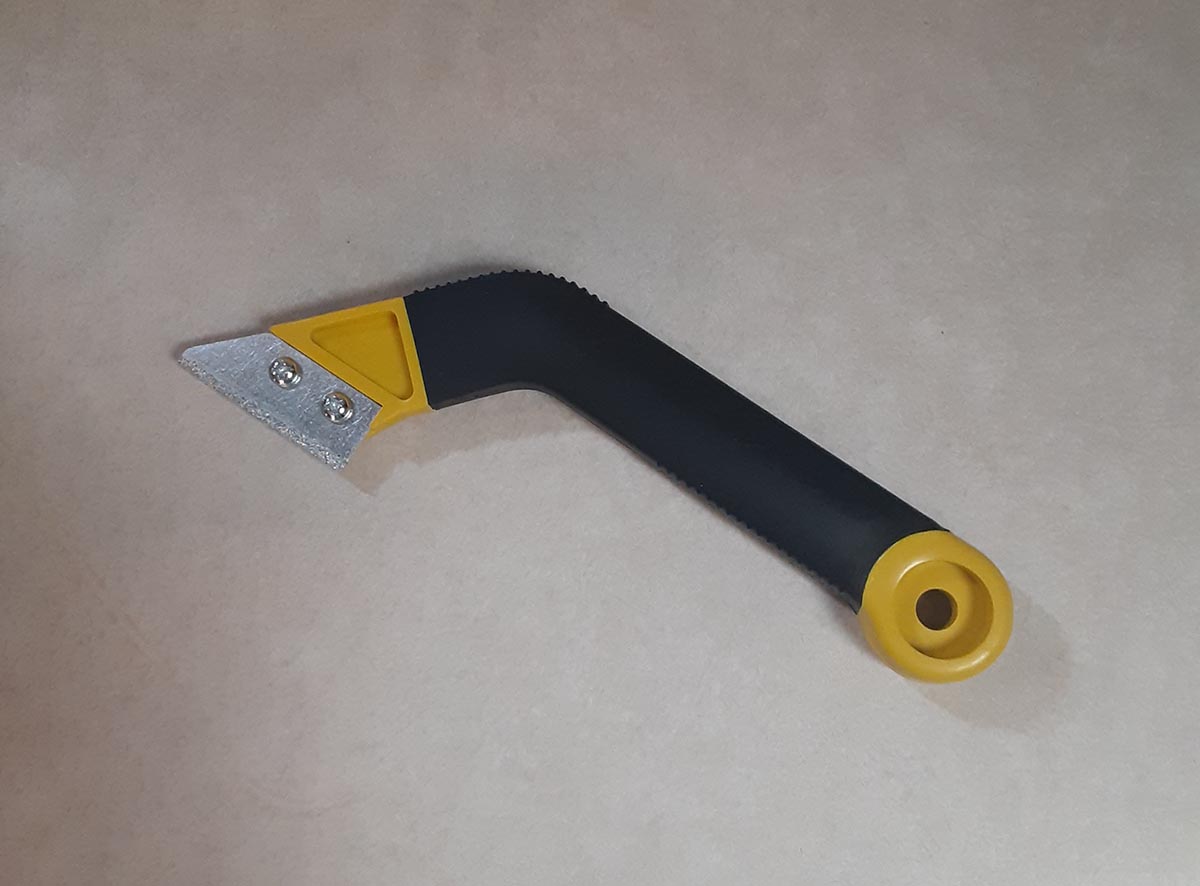
| Testing Stats | |
|---|---|
| Products tested | 5 |
| Time spent testing | 1 week |
| Tests performed | 4 tests |
| Price range | $9 to $126 |
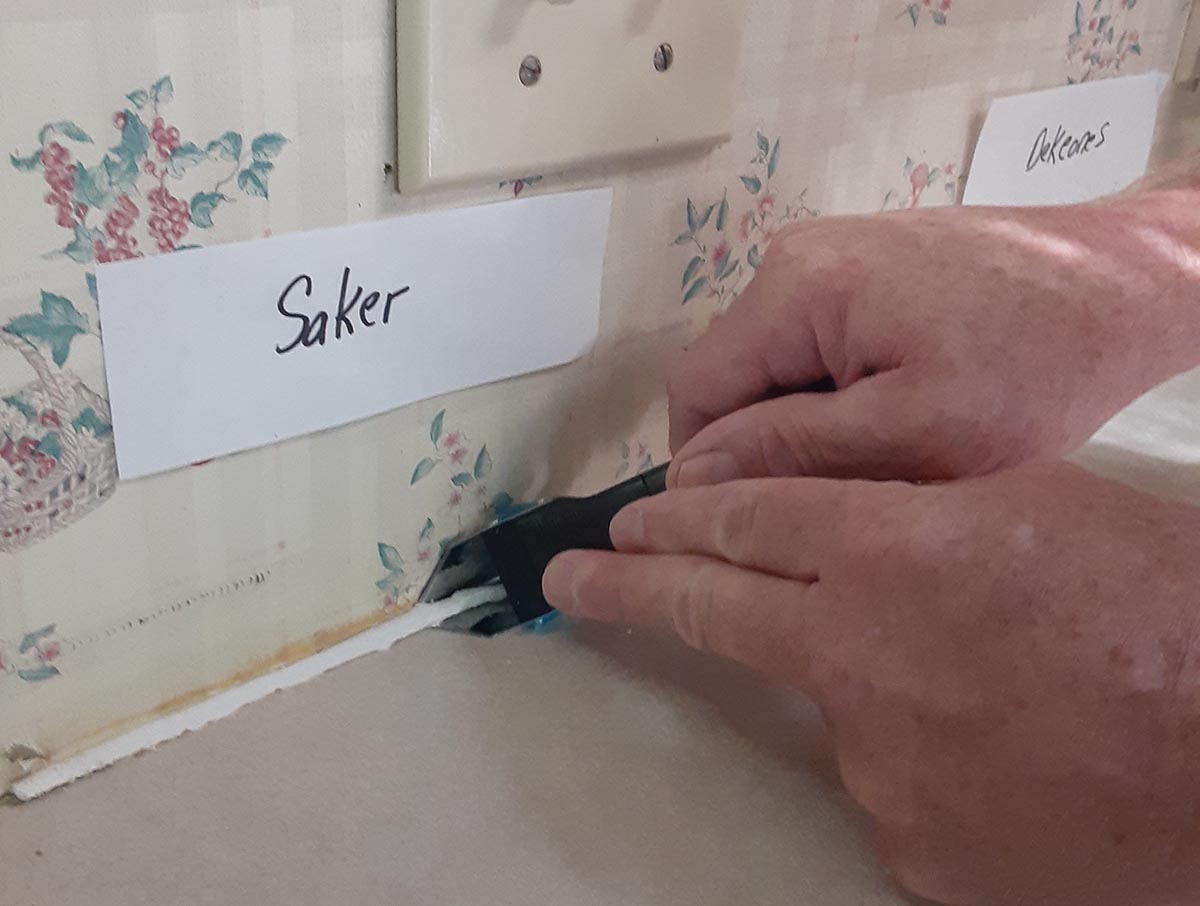
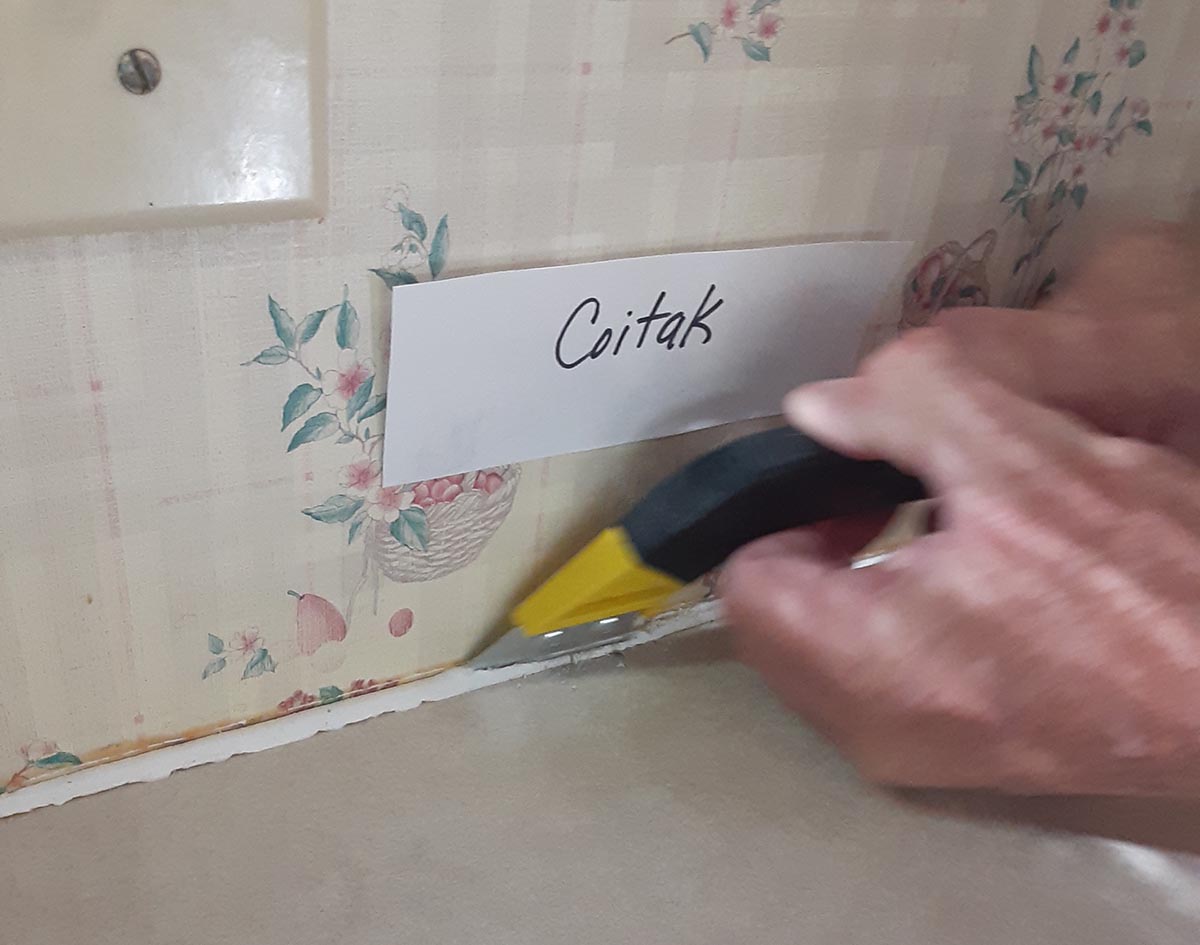

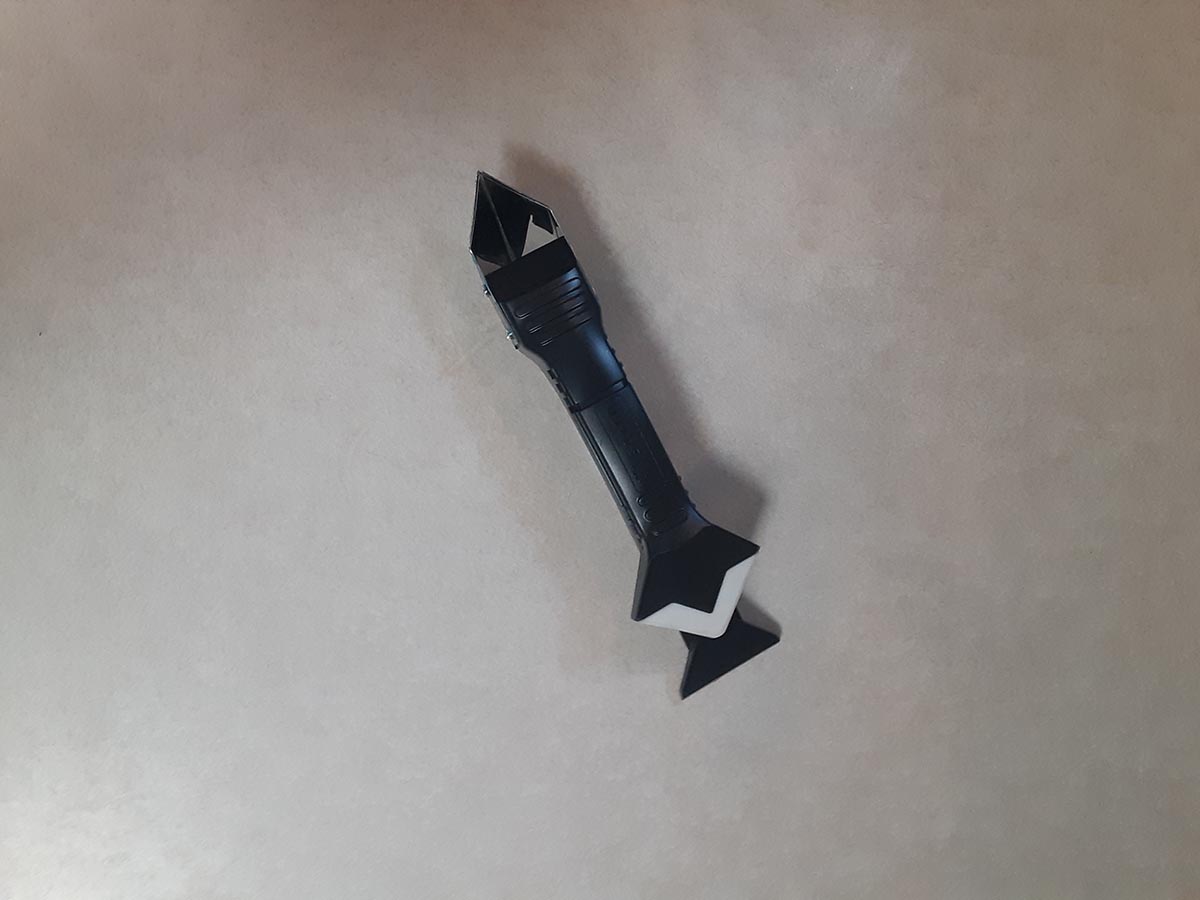
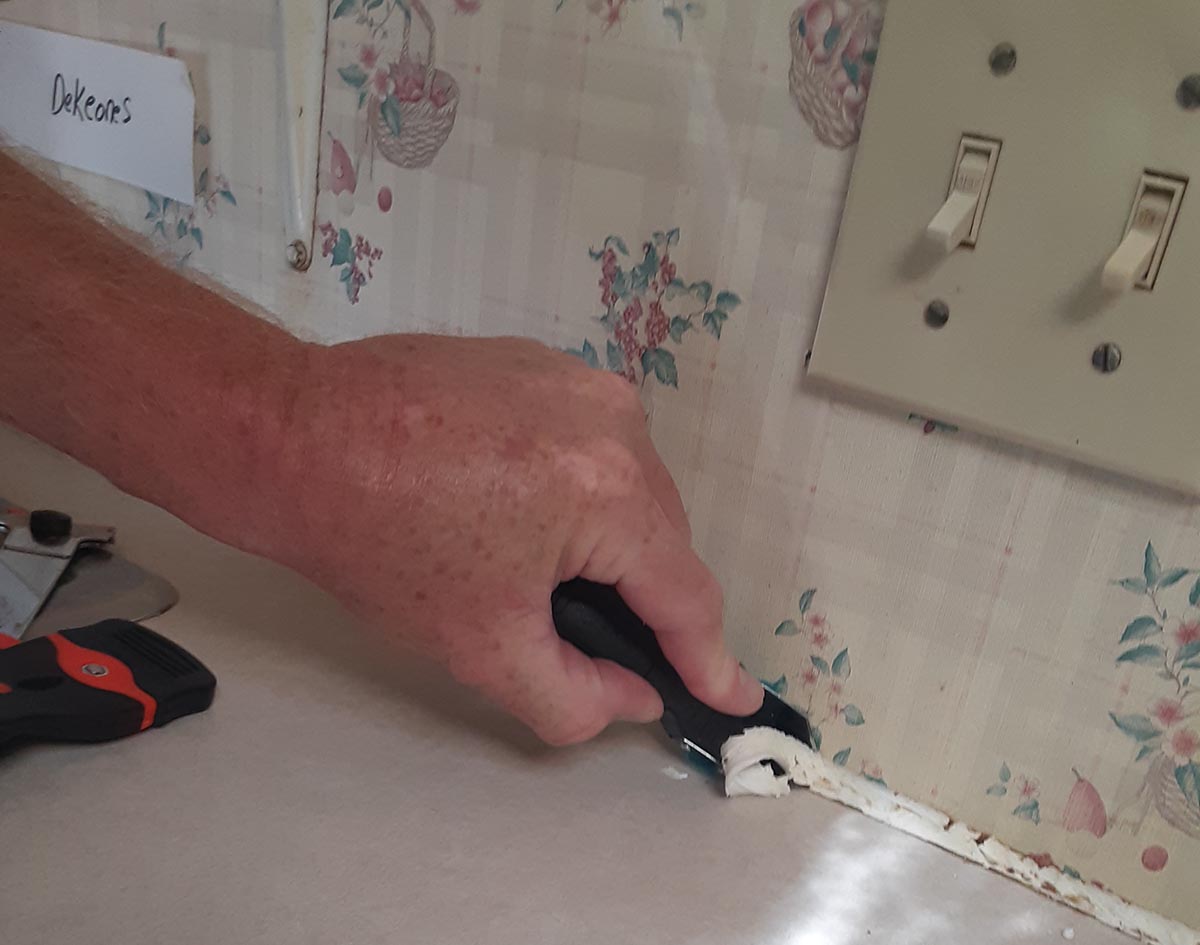
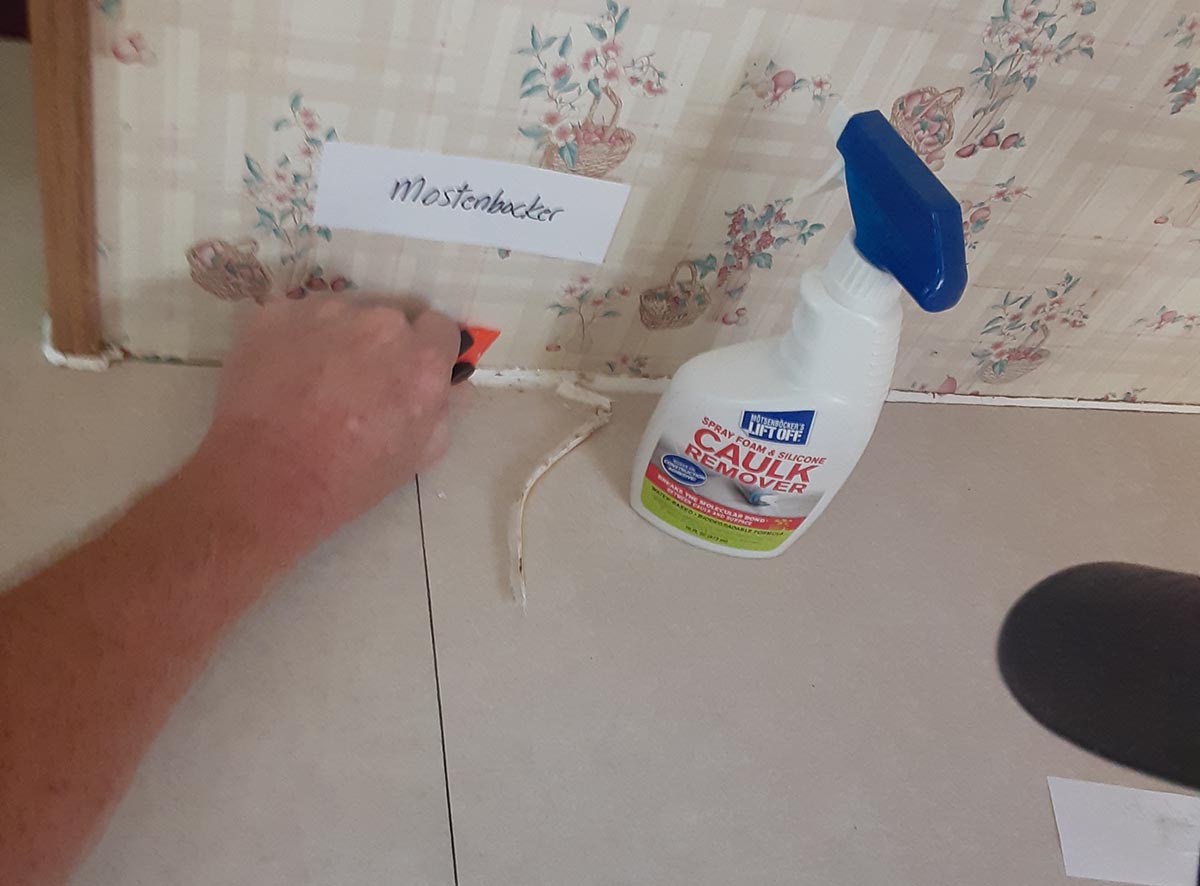

Our Top Picks
For help choosing the best caulk removal tool for a given project, reference the following products. This list consists of some of the best caulk removal tools on the market, organized by category.
Best Overall
Saker Silicone Caulking Tool
What We Like
- Comfortable handle for applying leverage
- Lightweight and compact construction
- 3-in-1 functionality for a variety of projects
What We Don’t Like
- Motion can be tricky to get used to
Product Specs
- Type: Specialized tool
- Materials: Heavy-duty plastic and stainless steel
- Extra features: Built-in scraper, caulk trowel, and several tips
Our Ratings: Comfort of Use 4/5; Durability 4.5/5; Effectiveness 4.5/5; Versatility 5/5; Value 5/5
DIYers looking for an all-around kit that can see them through an entire caulk repair job might appreciate the Saker silicone caulk remover. The caulk remover tool features a heavy-duty plastic body with a stainless steel caulk removal blade. This tool also has a plastic scraper and a caulk applicator with several tips.
This silicone caulking tool is compact, allowing it to fit in tight places. When testing began, we found the Saker awkward to use, but the more we used it, the more we liked it. It just took a few tries to get used to the motion and angle needed. This tool features a comfortable handle that should fit well in the hand of most DIYers and provide plenty of leverage.
Get the Saker caulk removal tool at Amazon.
Best Bang for the Buck
Coitak Angled Grout Saw
What We Like
- Comes with 3 diamond-style blades
- Easy to use on vertical and horizontal surfaces
- Suitable for use on a variety of surfaces
- Hanging hole for easy storage
What We Don’t Like
- May be hard to use for large-scale projects
Product Specs
- Type: Specialized tool
- Materials: Plastic, silicone, and metal
- Extra features: Angled handle, 3 blades, and a hanging hole
Our Ratings: Comfort of Use 4/5; Durability 5/5; Effectiveness 4/5; Versatility 4/5; Value 5/5
If you don’t want the fuss of a power tool or a high price tag, the Coitak angled grout saw is ideal for targeting small areas and cleanly removing pieces of leftover caulk. This budget-friendly caulking removal tool can be used on vertical or horizontal surfaces and comes with three diamond-style blades as well as a sturdy plastic and silicone handle for comfort and effectiveness. We found the angled handle helped us to reach into corners but felt that this tool is not the best choice for a large job.
This small but powerful tool’s saw is 5.3 inches long, which allows it to cover a lot of ground while chipping away at stubborn vinyl, plastic, metal, rubber, caulk, and grout. The angled handle also has a hanging hole so users can keep it hung in a workshop or tool box.
Get the Coitak caulk removal tool at Amazon.
Best Oscillating Tool
Bosch StarlockPlus Oscillating Multi-Tool
What We Like
- Cleanly removes adhesive
- Headlight makes visuals better
- Additional attachments available increase the versatility
What We Don’t Like
- Could be heavy during extensive jobs
- Could be difficult to use in small spaces
- Expense for DIYer with limited use for it
Product Specs
- Type: Power tool
- Materials: Plastic, aluminum
- Extra features: Cordless, hands-free release of attachments, headlight to improve visual, variable speeds, variety of additional accessories available to expand usefulness of tool
Our Ratings: Comfort of Use 4.5/5; Durability 5/5; Effectiveness 5/5; Versatility 5/5; Value 4.5/5
Compared to manual tools, we found that the Bosch oscillating multi-tool cuts through caulk like a knife through butter. The headlight is a great addition, allowing us to see details in dark corners without dragging in extra lighting. Although it is at the higher end of the price range, if you are planning different jobs, we think it’s worth the investment because additional attachments are available that can extend the usefulness of this tool.
On the one hand, we loved the power of this tool. On the other hand, the weight could be an issue for some DIYers, plus you’ll want to be careful to ensure you don’t damage certain surfaces. This product is for someone looking for one tool that can adjust to several different projects.
Get the Bosch caulk removal tool at Amazon or Lowe’s.
Best Scraper
Dekeones Razor Blade Scraper
What We Like
- Smaller scraper has plastic and metal blades
- Longer-handled scraper reaches into tight spaces
- Includes replacement blades and plastic safety caps
What We Don’t Like
- Can scrape or chip some surfaces
Product Specs
- Type: Scraper
- Materials: Plastic and metal
- Extra features: 2 different blades and safety caps
Our Ratings: Comfort of Use 5/5; Durability 5/5; Effectiveness 4.5/5; Versatility 4.5/5; Value 5/5
The Dekeones razor blade scraper kit comes with two scrapers: one compact scraper with a metal razor blade on one side and a plastic razor on the other, and a long-handled scraper for reaching into tight spots. We found the long handled tool more effective for caulk removal while the shorter tool was better for cleaning up little leftover bits of caulk. We also found the shorter tool effective for jobs like removing stickers from glass.
Both razor scrapers feature sturdy plastic handles that we found comfortable, while the long-handled razor has a durable metal arm. The kit comes with 20 metal blades and 10 plastic ones, as well as two plastic caps for keeping sharp razor scrapers safely stowed away. Keep in mind that these blades can easily scrape surfaces if held too steeply.
Get the Dekeones caulk removal tool at Amazon.
Best Liquid
Motsenbocker’s Lift Off Spray Caulk Remover
What We Like
- Spray-on solution works quickly, easily, and cleanly
- Biodegradable formula for the chemical-conscious household
- Works on several types of adhesives
What We Don’t Like
- Can damage surfaces if left on too long
- Requires good ventilation
Product Specs
- Type: Spray
- Materials: Water-based formula
- Extra features: N/A
Our Ratings: Comfort of Use 4.5/5; Durability 4.5/5; Effectiveness 5/5; Versatility 4.5/5; Value 5/5
We had never used a spray for caulk removal, so Motsenbocker’s Lift Off spray was a new experience. This spray-on solution is designed to penetrate the space between the caulk and the surface, breaking the molecular bonds that hold the two together. We were amazed that we could just peel strips of caulk away, by hand or with minor help from a scraper. Cleanup is a breeze.
This spray-on solution features a water-based, biodegradable formula that works on caulks, expansion foams, sealants, construction adhesives, and epoxies. It takes just 3 minutes (after spraying) to loosen the caulk, making fast work of tough bonds. However, if left to sit for more than 15 minutes, it can damage surfaces. With that in mind, we applied it to small areas of caulk. We also recommend having effective ventilation of your work area as the odor was powerful when working in a small powder room.
Get the Motsenbocker’s caulk removal tool at Amazon or Lift Off.
More Great Options
If only we could test all the products! Although these products were not tested, we still give them our recommendation based on our research and customer reviews.
Best Tool Blade
Dremel Universal Oscillating Blade
What We Like
- Universal fit with several brands
- Durable metal construction
- Can be used on multiple projects
- Flexible for reaching into awkward angles
What We Don’t Like
- Can scratch delicate surfaces
Product Specs
- Type: Oscillating tool blade
- Materials: Metal
- Extra features: Universal design
Digging through old caulk can be a tough job, and the fastest way to do it is with an oscillating tool. For those who prefer to go this speedy route, be sure to consider the Dremel MM610 oscillating tool flexible scraper blade. We like the fact that this blade attaches to several brands’ oscillating tools, including Dremel, Bosch, Milwaukee, Makita, and Rockwell.
Dremel makes its blades from heavy-duty metal, meaning the blade can take the high speeds dealt by an oscillating tool as well as the heat and friction caused by the caulk. Also, this blade features a bit of flex for reaching into awkward angles. Do keep in mind that this sharp tool blade can scratch a surface if you aren’t careful.
Get the Dremel caulk removal tool at Amazon, Ace Hardware, or The Home Depot.
Best Knife
Hyde 06988 Pro Stainless 8-in-1 Multi-Tool
What We Like
- Multiple features: can opener, roller cleaner, putty spreader
- Heavy-duty steel can take a lot of pressure and leverage
- Plastic grip is comfortable for extended use
What We Don’t Like
- Not as sharp as a razor
Product Specs
- Type: Knife
- Materials: Stainless steel blade
- Extra features: Paint can opener, roller cleaner, and more
We believe every DIYer should have a high quality multi-tool, and Hyde’s eight-in-one model is a good choice. This painter’s tool features a stiff blade with a tapered edge that can get underneath caulk and separate it from a counter, a sink, or a window surface. It’s a tool we would turn to again and again to open paint cans, spread putty, clean paint rollers, set popped drywall nails, and more.
This caulk remover and utility knife features a heavy-duty stainless steel that can take a lot of abuse and pressure. While the edge might not be as sharp as a scraper, the tapered edge is also less likely to scratch a counter or a fixture.
Get the Hyde caulk removal tool at Amazon or Ace Hardware.
Best Grip
Allway 3-in-1 Caulk Tool
What We Like
- Soft grip is comfortable for extended use
- Curved blade scoops out grout easily
- Adjustable silicone rubber triangle for applying caulk evenly
- Can remove silicone, latex, and acrylic caulk
What We Don’t Like
- The blade may be challenged by harder caulk
Product Specs
- Type: Scraper and specialized tool
- Materials: Stainless steel, silicone rubber, and plastic
- Extra features: Silicone rubber triangle with 3 bead profiles (narrow, medium, and wide)
A user’s grip on a caulk removal tool is important since the process requires a lot of precision and elbow grease. This all-in-one model from Allway comes with an ergonomic design and soft-grip handle that has a stainless steel scraper blade on one end for removing latex, silicone, and acrylic caulk and an adjustable silicone rubber triangle on the other end with three bead profiles that smooth caulk after it is applied.
The triangle head has a narrow, medium, and wide point for laying applied caulk in windows, around tubs, or in showers. The blade itself is made with a curved edge that scoops grout out easily.
Get the Allway caulk removal tool at Amazon.
Jump to Our Top Picks
How We Chose and Tested the Best Caulk Removal Tools
Selecting the best caulk removal tools can be as tough as the old, dirty caulk itself. We tested each product removing silicone, latex, and sanded caulk. In addition to using the various tools or blades (if applicable) for each brand, we also removed caulk from different spots (bathtub, window, counter) to get a true picture of the effectiveness of a tool. We compared how easy the job was, how cleanly the caulk was removed, and the comfort of using each tool. In addition to the results of the removal tests, we also considered price, versatility, and durability.
What to Consider When Choosing a Caulk Removal Tool
Applying clean beads of caulk to baseboards, windows, and bath fixtures can be tough, but removing it can be a painstaking but necessary task. Choosing the best caulk removal tool will make the job a lot easier. We feel there is not one best tool for caulk removal. We find it helpful to take into consideration where you’ll be removing the caulk, what type of caulk you’ll be removing, and the surrounding surfaces (tile, wood, etc.). Below are some of the top considerations to keep in mind when choosing a caulking remover.
Types
DIYers have a few choices when it comes to the types of tools available for removing caulk. There are basic scrapers and knives, as well as specialized hand tools, blades that attach to power tools, and even liquid solvents.
Brandon Walker, construction manager of ASAP Restoration in Temple, Arizona, suggests the following: “If you have particularly ornate molding, baseboards, or picture hanger, then it would also be best to get a scraper with contouring heads so that you can find the best fit for each groove in the plank.”
Which type to choose is a matter of preference.
- Scrapers often feature removable utility blades that can slice through a caulk bead. They are a bit awkward in hand, however.
- Knives, similar to the ones painters carry for all-purpose uses, are also useful for removing caulk. Their edges aren’t as sharp as scrapers, but the longer handles make controlling them much easier.
- Specialized tools designed for working with caulk are also available. Most often, these are combination tools with scrapers, blades, and even tooling edges for smoothing new caulk.
- Power tool attachments, like blades that attach to electric oscillating multi-tools, can easily work their way into beads of caulk. These attachments can make short work of a long bead, but they’re also a bit more likely to scratch or mark a surface.
- Liquid solvents can be helpful for folks who can’t stand scraping caulk. These sprays will loosen the caulk and make it easier to remove, but they won’t remove the caulk entirely on their own. Don’t be fooled into thinking they can remove caulk from fabrics, however. There are specific tricks for that.
Size
Removing caulk remnants may require reaching into some tight or awkward places, and large tools just aren’t up for the job. For these situations, a compact tool that will fit in those nooks and crannies will make removing that stubborn sealant much easier.
However, for large amounts of caulk, a smaller tool might not do the trick. In these cases, a larger tool with a longer handle can make applying leverage to a thick bead of caulk much easier. These tools will be able to get underneath the caulk and separate it from the surface—something that might seem impossible with a smaller caulk-removing tool.
Versatility
There are a lot of tools available that can remove caulk, but some of them have more than one function. For instance, painter’s tools with knife edges can scrape up caulk, open paint cans, or even tighten the screws on light switch covers. We found that tools that include both a side for removing caulk in bathrooms and a fixture for tooling fresh caulk can be very useful.
For DIYers, this type of versatility could make all the difference. One tool that can handle several jobs means a smaller overall investment. It also equates to less space taken up in a tool box, leaving room for other implements.
Materials
Caulk tools designed for removing caulk will see a lot of hard use, so it’s important that they’re made from quality materials. The blades or edges meant for separating the caulk from the surface are best when made from a durable metal like stainless steel or tool steel. These blades will work for a long time, take a bit of abuse, and can even take a sharpening if necessary. It’s also helpful if a product includes replacement blades.
As far as handles go, durable plastics are typically the material of choice. However, some of the best caulk removal tools feature wooden handles or all-metal shanks with molded rubber grips. Any of these materials will usually last for several years.
Safety
Some tools designed for caulk removal feature sharp razor blades or edges, and applying a bit of pressure to a stubborn bead of sealant can get a little sketchy. Also, storing a caulk remover tool with an uncovered blade in a tool belt or tool box is a recipe for stitches.
To reduce the risk of accidental cuts, manufacturers often include blade covers that users can pop on and off when needed. Also, handles that offer plenty of grip to prevent slipping or clumsy fumbling will reduce the risk of an accidental cut while applying leverage.
FAQs
Even with that extensive background on the best caulk removal tools, there might be some additional questions sticking around. The following includes some of the most frequently asked questions about these tools.
Caulk removal tools are efficient for a variety of tasks, including applying caulk. Many models on the market are made to be even more multipurpose as they can be used as paint can openers, paint roller cleaners, and as a way to clean grime out of caulk in tubs or showers.
Rubbing alcohol alone is not powerful enough to soften caulk. Isopropyl alcohol is an industrial-grade option that can effectively soften silicone caulks from plastic and painted surfaces. This compound is not abrasive and won’t damage surfaces.
While caulk removal tools are capable of removing caulk, a razor blade is capable of removing caulks effectively. We recommend the Hyde caulk removal tool for those who don’t have or prefer a caulking tool since this blade is versatile and ergonomically designed for scraping caulk out cleanly.
There are several types of tools designed to remove caulk, but most work similarly. The tools dig into the caulk and separate the bond between the sealant and the surface it’s adhered to.
Knives, scrapers, and caulk removing tools are often the best for the removal of silicone caulk, but spray-on removers can also be effective, and they’re often less of a headache to use.
“Place the tool at a slight angle to the surface of the caulk and with the scraper positioned against the joint,” Walker advises. “Apply a slight amount of pressure to the tool so that it stays in close connection with the wall to get the most caulk out of the corners.”
Meet the Tester
Jodi Webb is a DIYer who tests products with her contractor husband so readers get the advantages of an expert’s and a DIYer’s viewpoint. Her dream is to test mini greenhouses one day.
Additional research provided by Tom Scalisi.
